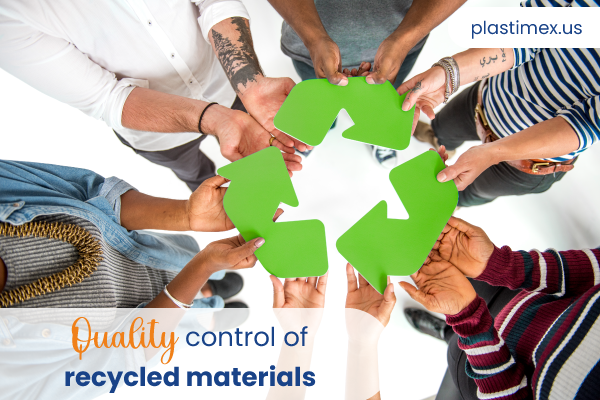To optimize the plastic circularity, it is essential to evaluate that the recycled materials have sufficient quality to produce new products. Meaning it is necessary to analyze that they do not lose properties such as lightness, flexibility, and resistance (to impact or high temperatures). Therefore, for the resin created with recycled materials to be competitive with virgin resin, it must retain its main characteristics so that products made from recycled materials are considered an advantage in the market. Find out everything you need to know about quality control in this type of material.
How to improve the quality of recycled materials?
To maintain a high-quality standard, the properties of recycled materials must be analyzed such as durability, impact resistance, insulation, impermeability, thermal insulation, and useful life, among others; and this control certifies that they meet minimum requirements to incorporate them back into the production chain.
To a large extent, the quality of the resin that will be obtained often depends on the type of recycling to which it is submitted. For example, primary recycling is carried out with industrial remnants that are inserted back into the production line. This process does not preserve the properties of virgin resin, mainly for products of great capacity or size, however, they have the advantage that they have never been used.
Secondary recycling, also known as mechanical, is one of the most used; It consists of collecting, separating, washing, and reprocessing the different types of plastic, however, the purity of the material decreases considerably, which is why it is not recommended for articles that are in contact with products that are intended for human consumption.
For its part, chemical or thermal recycling is a great option for the different plastic resins, thanks to these methods it is possible to obtain the original components of said recycled materials, therefore, they maintain a high quality of the recycled materials.
PET recycling
A very interesting feature of PET is that it is 100% recyclable, and it requires less energy and less water to manufacture compared to other materials. The recovery of PET is part of an international environmental strategy since incorporating it again for the manufacture of containers significantly reduces the carbon footprint in terms of energy required and greenhouse gas emissions. In addition, this process is becoming one of the biggest business opportunities in the plastic sector, so it is essential to have the appropriate infrastructure to improve the quality of recycling.
If you want to know more about this topic or the variety of packaging that we have at Plastimex, contact us and our packaging experts will gladly provide you with the necessary details.

